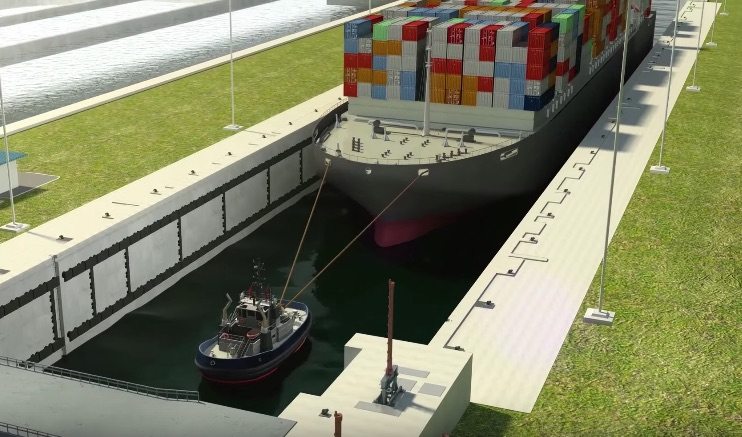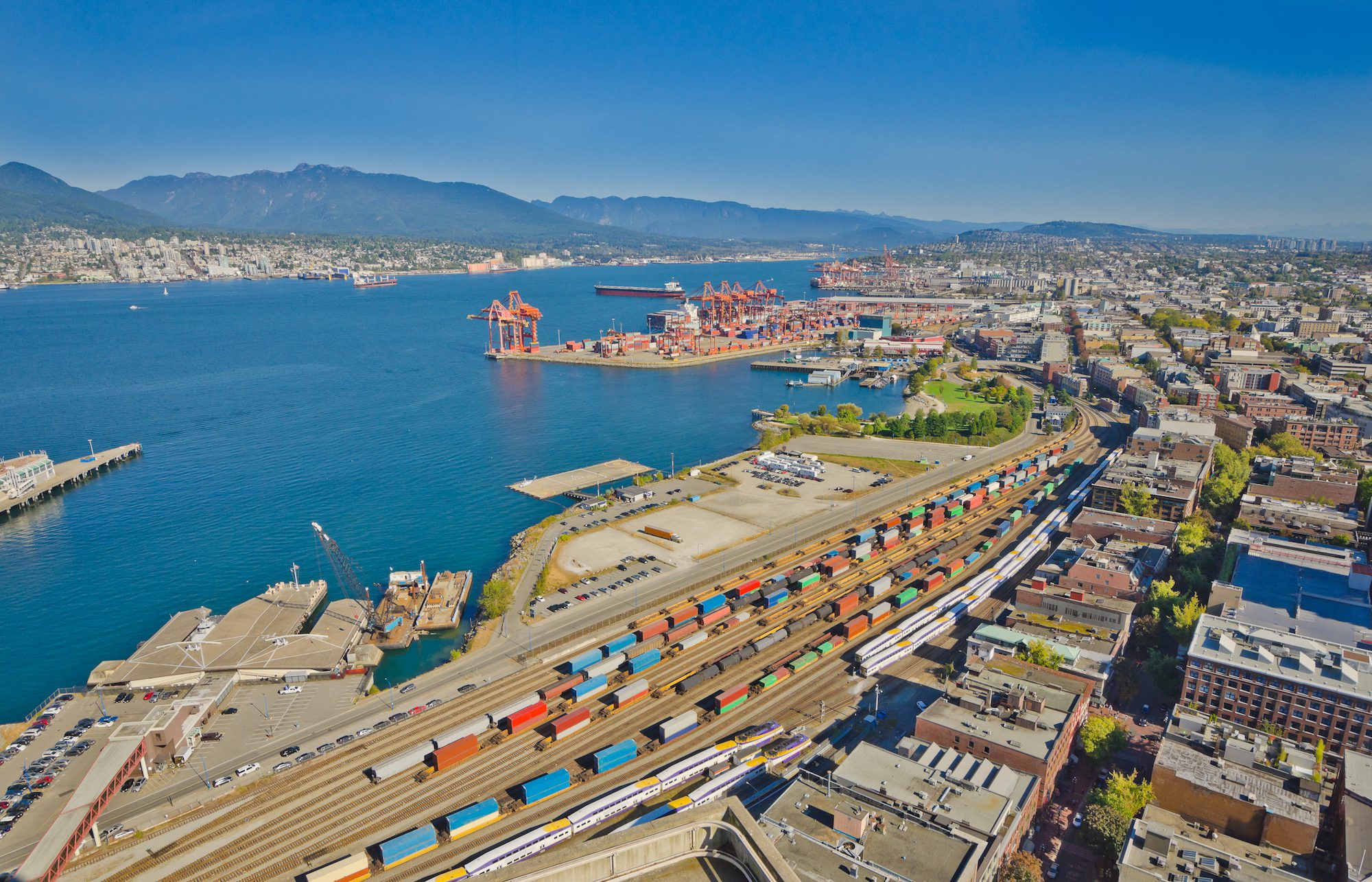An illustration shows a tugboat guide a ship into the lock of the expanded Panama Canal. Credit: Panama Canal Authority/Youtube
The International Transport Workers’ Federation has expressed concern over the safety of the new Panama Canal locks after an independent study into the expansion project confirmed some local pilot’s concerns that the design of the new locks poses added risks to workers and ships. Canal officials have denied the accuracy of the study.
ITF commissioned the study after its Panamanian member unions raised serious concerns to the union group centered around the Panama Canal Authority’s (ACP) refusal to engage in dialogue on matters such as training, as well as technical and construction issues that have led to delays in the $5.3 billion project.
The study, which was carried out by Brazil’s Fundação Homem de Mar (FHM), was based on mathematical conclusions derived from simulations conducted in maneuvering simulator using a scale model of the new locks, a typical Neopanamax vessel and the planned configuration of two tugboats under various environmental conditions, according to the ITF. Unlike the existing locks, which uses locomotive (aka mules) to guide ships in and out of the locks, the new locks will use tugboats, one aft and forward, to assist ships through the new locks. Another two tugs (four total) will be used upon entry into Canal waters and on the approach to the locks.
(In case you missed, here’s a video describing how ships will transit through the expanded Panama Canal.)
The ITF says that the concluded that the safety of maneuverability within the locks is compromised due to several factors, namely:
- The locks’ dimensions are too small for safe operation (with both gates closed);
- There are no refuge areas for the tugboats inside the locks, leaving no room for failure (human error, miscommunication, broken lines or engine failure);
- The bollard pull is insufficient;
- In terms of maneuverability in the locks, the control of the vessel was compromised under the average environmental conditions present in that geographic area (data provided by the contracting party). The main reasons were the low power of the tugboats and the required bollard pull. With milder conditions the exercise was concluded safely.
- The study recommends that a complete risk analysis and special training should be carried out to avoid any accidents that may result in loss of life or pollution.
The conclusions echo similar concerns that a veteran Panama Canal ship pilot expressed to gCaptain back in July 2014 regarding the design of new locks, particularly with regards to the size of the individual lock chambers, the configuration of the tugs, and the prevailing winds that the region is known for. (See: Veteran Canal Pilot Says Expanded Panama Canal Fundamentally Flawed)
In an editorial written in October 2014 by Captain Rainiero Salas, President of the Panama Canal Pilot Association, he wrote about concerns of major operational issues with the expanded Canal, which also centered around the use of tugboats over locomotives and the lack of a structured training program for pilots. Salas also warned about the navigation of two ships at a time through Culebra Cut (Gaillard Cut), the narrowest part of the Panama Canal.
Speaking from Panama City during an event marking the release of the study, ITF general secretary Steve Cotton said: “I wish I could report that the study gave the new locks the all clear. Sadly, I can’t. Instead we face a situation where those working on the canal, and those passing through it, are potentially at risk. That will have to change.”
Cotton continued: “The issues identified in this study will not be a surprise to workers on the canal. Unfortunately their expertise and experience have up to now been snubbed. Thankfully they’re still on offer. Those who’ll be working these locks have to be brought into the process, while there’s still time to fix the defects.”
The ACP has dismissed all conclusions from the ITF study as false, and has maintained that its training has been sufficient.
“ITF’s claims in a recently released document are not based on mathematical models and do not include data from physical navigation tests as that been done in preparation for operations in the Expanded Canal,” the ACP said in a statement provided to gCaptain. “It therefore lacks scientific accuracy and credibility. In addition, the authors have not transited through the Panama Canal and are not trained to do so.”
The study can be found HERE (opens as PDF).
This past March, the Panama Canal Authority opened a new 35.3-acre Scale Model Training Facility to be used for additional hands-on training for pilots and tugboat captains operating in the Expanded Panama Canal, complementing the training already undertaken at the Canal Authority’s Center of Simulation, Research and Maritime Development. The facility features a 1:25 scale model of docking bays, replicas of the new and existing locks, gates, and chambers, as well as scale model tugboats, containerships, bulk carriers, and LNG carriers. It also includes wind and wave generators to replicate weather conditions typical of the area.
The statement from the ACP added: “The Panama Canal spent nearly 10 years to methodically and professionally evaluate and analyze the design of the Expanded Panama Canal’s locks. This process included conducting internal and external studies to determine how the new locks should operate. After this in-depth process, the Panama Canal made the informed decision to embrace the industry standard of using up to four tugs to navigate ships. Outside industry experts concluded that the ACP’s decision was correct.”
“We commend all who have been involved in this project over the past 10 years,” said Captain Peter Pusztai, Panama Canal Pilot Training Coordinator. “The ITF’s claims are unproven and contain many errors. Despite their false claims, we look forward to transforming the maritime industry through the opening of the Expanded Panama Canal.”
Here’s a video on the results of the study:
Unlock Exclusive Insights Today!
Join the gCaptain Club for curated content, insider opinions, and vibrant community discussions.

 Join The Club
Join The Club













